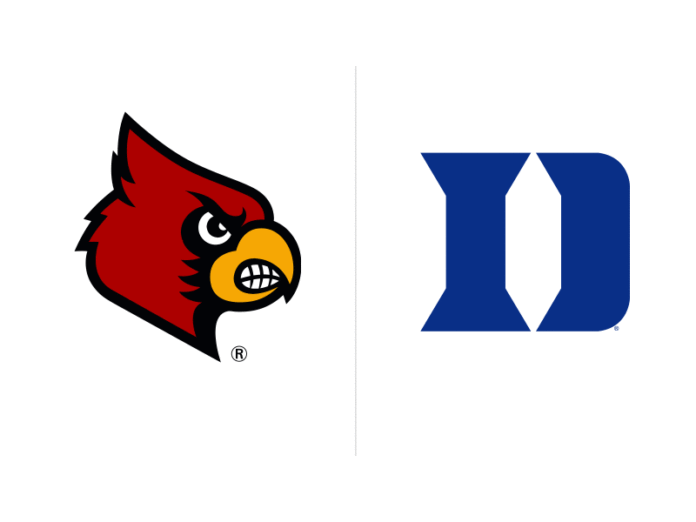
When the University of Louisville Cardinals and the Duke University Blue Devils meet Friday night at Papa John’s Cardinal Stadium, the level of competition will be fierce, much as expected when an ACC Atlantic Division powerhouse (UofL) meets an ACC Coastal Division foe (Duke).
Off the playing field, however, the two schools channel their energy to defeat a common enemy: disease. Their combined efforts are helping to lead to new therapies, improved patient outcomes and healthier lives.
At the UofL Health Sciences Center, several projects are underway that are Duke-UofL collaborations. From clinical trials researching an experimental drug for patients undergoing heart surgery to studies examining ways to make drugs for infants and children safer, such multi-center research is the key to discovering the cures of tomorrow.
Multi-center testing of new drugs and other therapies has long been part of the FDA approval process. In the lengthy journey a new drug takes from the laboratory to the patient — “from lab bench to patient bedside,” in the verbiage of researchers — multi-center testing is a final linchpin before a drug goes up for review.
While many steps can be taken from bench to bedside, the basic path a drug follows is first in the lab, then in a small sample of patients at one location and finally in a large sample of patients at several locations. Only then can a drug be submitted to the FDA for possible approval.
Other factors are fueling the move toward collaborative research, most notably, the National Institutes of Health’s increased emphasis on awarding funding for these types of studies. In 2004, the NIH examined the state of medical research and offered up ways to improve it through a comprehensive plan called the NIH Roadmap. With the 2006 creation of the NIH Common Fund to support research developed from the Roadmap, the growth of collaborative research was underway.
Today, this growth is reflected by studies published in medical journals: More than 40 percent of published studies in leading journals are collaborative in nature. Not surprisingly, research funding favors collaboration as well; both government agencies and private foundations have increasingly structured requests for proposals to favor collaboration.
Among the collaborative studies underway at UofL is a clinical trial headed by Mark Slaughter, MD, investigating a new drug, Levosimendan. Patients meeting certain criteria who are undergoing bypass surgery are randomized to receive either the investigational drug or a placebo. The study will evaluate if the drug reduces adverse outcomes such as heart attack or death and the need for further treatment such as mechanical assist devices and dialysis within 30 days of the original surgery. Slaughter is chair of the Department of Cardiovascular and Thoracic Surgery at UofL.
In the Department of Pediatrics, Michael Smith, MD, is active with the Pediatric Trials Network (PTN) and the Antibacterial Resistance Leadership Group (ARLG), both of which are based at Duke University. The PTN is a network of pediatric clinical trials sites that focuses on pharmacokinetics — how drugs work and move through the body — and drug safety studies in children. Smith is a member of the Network Steering Committee for the PTN and has conducted trials with the group in the past. Currently, he is the external team leader for a PTN trial, Antibiotic Safety in Infants with Complicated Intra-Abdominal Infections. This is an international, multicenter safety and pharmacokinetic trial of antibiotics in newborns who have complicated abdominal infections. Coming soon will be a new trial with the ARLG: Smith will be the national principal investigator for a first-in-children trial of a new drug known as an aminoglycoside, a bactericidal antibiotic.
Elizabeth Wise, APRN, is with the Department of Neurology and a member of the University of Louisville Hospital stroke team. She is working with Duke researchers on a clinical trial to assess outcomes for patients who have experienced ischemic strokes that occur as a result of an obstruction within a blood vessel supplying blood to the brain. PROSPER — Patient-centered Research into Outcomes Stroke patients Prefer and Effectiveness Research — is a three-year study that documents how well the patients regain their independence after leaving the hospital. UofL has enrolled 65 patients to date, and is one of the highest-enrolling of the 75 sites in the study.
Wise has found the Duke researchers to be excellent partners on this project as well as previous collaborations. “They have a huge team and they are very responsive and easy to work with,” she said. “I look forward to doing more research with them. They have always had great projects.”
“Great” seems to be the operative word. Fans look forward to a great game Friday night, and the UofL-Duke matchups at the Health Sciences Center are making great strides in advancing medical knowledge.
To learn more about UofL-Duke collaborative studies and about all the clinical trials currently underway at UofL, visit the Clinical Trials Unit web page.































